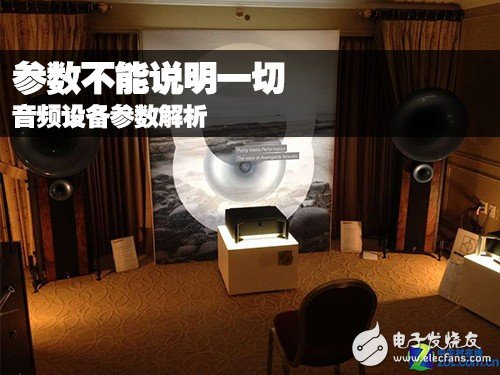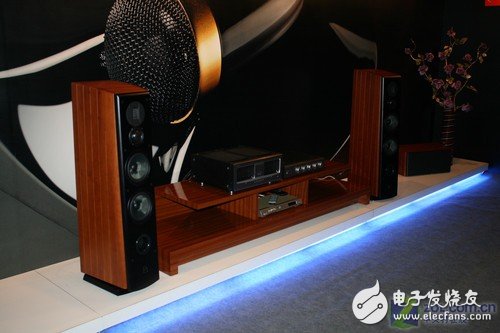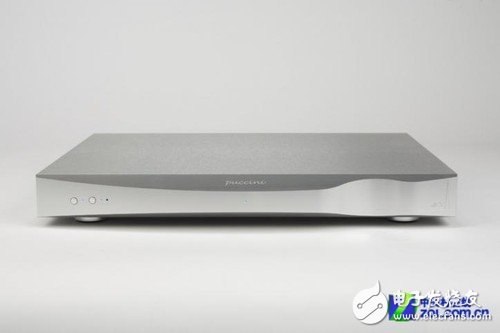Parameters do not account for all audio device parameter resolution
For products in various industries, there are various parameters as equipment. For the audio industry, speakers and audio sources as well as amplifiers also have a lot of parameters, and for most consumers, the meaning of these parameters is not understood. The higher the better, the lower the it is good? And how much influence can these parameters have on the final performance of the device sound? Parameters do not account for all audio device parameter resolution With the digitalization of audio equipment, manufacturers have begun to pay more and more attention to the promotion of product parameters, the birth of a "king of parameters" equipment that is gorgeous and smashed, and some of them are really worthy of these. A good machine with super parameters, and there are also many machines with almost no sound in the ear. In the era of simulation, most of the equipment never emphasized how powerful the parameters were. Even the classic products were not so good-looking, but they were well received by countless consumers and enthusiasts. Parameters These hard indicators are not omnipotent for audio products. It can only be said that good equipment is often ugly, but good-looking parameters do not necessarily mean that this product is good, for consumers and enthusiasts, If you have not heard of the product, you may also prefer products with excellent performance, but what do these parameters mean? Are these parameters high enough to have excellent sound? Let's take a look at the following article! Distortion and amplifier Amplifiers, also known as power amplifiers, are an important part of the sound system. Power amplifiers are divided into tube amplifiers and transistor amplifiers. Tube amps are the amps of many senior enthusiasts. Although compared with ordinary transistor power amplifiers, the cost of the amplifier is high, bulky, and high in power consumption, but it is still supported by the majority of music enthusiasts. Why? The amplifier often has a lot of distortion, but there are still many old burning pursuits. Due to the unique harmonic distortion of the amplifier, the tube amplifier can easily restore the "sweet, sweet, moist" sound of the real instrument. It is also the even harmonic distortion. The test index of the tube amp is generally lower than that of the transistor amp. The total harmonic distortion of many classic machines is even more than one percent. For transistor amplifiers, it is easy to achieve low distortion of a few tenths of a percent, but the transistor amplifier is a bit too straightforward and irritating with respect to the tube amplifier. Therefore, after the digital audio source became popular in the 1980s, the electronic tube power was put on the fever audio market, making an indelible contribution to the "cold, hard, dry" of the digital sound source. Channel separation and presence Channel separation is an important indicator of audio products and refers to the degree of crosstalk between two channels. If the crosstalk is too large, the stereoscopic stereo will be weakened. Some audio products are excellent in the pursuit of indicators, and even cost a lot of effort, even paying the price of sound quality affecting other aspects, the channel separation degree is 90 to 100 decibels, which is worth not worth it? The current mainstream device separation is no longer a problem. In fact, the music on the scene does not have only two channels. Although both ears are born, the two ears are not completely isolated. Anyone who has heard the symphony music scene knows that in the center of the 10-20 row, the so-called emperor position, the channel separation of the human ears is more than 60 decibels. This is the topic of debate in the audio industry for many years. Is it meaningful to pursue the channel separation index excessively? Jitter Jitter was first discovered by Toshiba engineers from the late 1980s and early 1990s. Translation is the meaning of time jitter, which is a more abstract concept. For example, Xiao Ming’s teacher is going to class at 7:30 every morning, but Xiao Ming’s teacher may arrive at the classroom at 7:28 today, and the day after tomorrow is 7:33, which means that the class should happen on time. In advance or postponement of the time of occurrence, another saying is called the shaking of Xiao Ming’s timeline. When the jitter of the jitter is large, for example, Xiao Ming’s teacher is half an hour late today, and half an hour earlier tomorrow, the student will complain. Similarly, the signal transmission of digital audio consisting of 0 and 1 also has this problem. The world's top audio brand DCS also has its own suit clock The standard I2S digital audio transmission has a dedicated time signal channel. Even so, the jitter is still inevitable. So there are a variety of independent clocks to reduce jitter distortion. With the rapid development of telecommunications technology, the clock is gradually miniaturized and high-performance, so the impact of jitter distortion on the sound quality is gradually less important. With 50 ppm of clock and 10 ppm of clock accuracy, how much difference does the user really hear when using the same monitor? However, in the successful marketing of famous audio brands, jitter has become a selling point of fever equipment and has become an important indicator of the audio market. Even some manufacturers use the temperature-compensated crystal oscillator as a selling point of equipment to speculate, which is misguided. High Voltage Lan Transformer,High Voltage Pwoer Pulse Transformer,Cmc Coilfor Automotive Product,High Voltage Pulse Transformer IHUA INDUSTRIES CO.,LTD. , https://www.ihua-inductor.com


